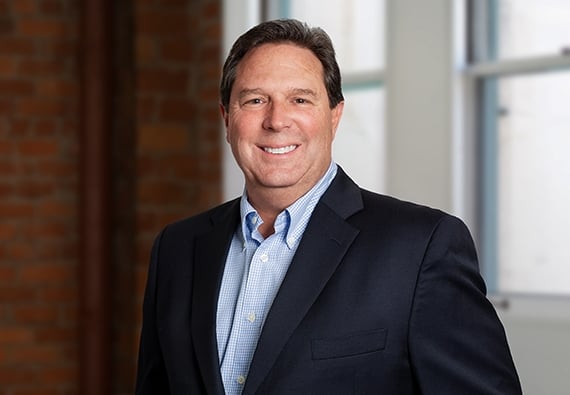How Napa County Seeks to Streamline the Winery Permit Process
Recently, local members of the wine industry in the Napa County area of Northern California have been actively engaged with county government in discussions regarding ways to streamline the winery use permit process.
Frustrated with the cost and lengthy time frames associated with the current process, California vintners have been searching for ways to make the permitting process more user-friendly, and a number of proposals for change – that may serve as templates for other wine-growing regions in the state – have emerged.
Generally, the proposals are focused on two different issues: 1) developing a way for small family farms to have wine tastings on their vineyard properties; and 2) simplifying the use permit modification process for existing wineries.
With regard to family farms, in recent years a number of grape growers have entered the wine market and developed their own “virtual” brands. The usual method is to become licensed as a “Type 02 Winegrower” with the California Alcoholic Beverage Control (ABC) and to become an “alternating proprietor” at another winery facility.
In essence, the alternating proprietor and the host winery share the host’s wine premises. This allows the winegrower to have all the rights and privileges of a winery without the cost of developing a bricks and mortar facility – potentially cultivating a new wine brand that few consumers would otherwise be able to access.
However, the difficulty with an alternating proprietorship (or “AP”) arrangement is that the AP frequently does not have the ability to have wine tastings at the host winery. And, even in situations where an AP can hold tastings, it is often difficult to build a brand where the tasting facility is disconnected from the AP’s vineyards and their “story.” For this reason, the AP reasonably would like to have the ability to bring visitors to their vineyard and to conduct tastings and wine sales there.
Unfortunately, current regulations in Napa County do not allow for such an arrangement. Thus, one of the topics under discussion is how to make it viable for vineyard owners without their own winery facilities to conduct wine tastings. The simplest solution may be to allow offsite tasting rooms on agricultural properties whose owners hold a Type 02 winegrowers license.
Briefly, the ABC allows the holder of a winegrower’s license to have a separate standalone tasting room at a different location. This is referred to as a “Duplicate 02” license, or more colloquially a “dupe 02.” It allows for an offsite tasting room where wine tastings and sales can occur, separate from the winery facility where the wine is produced.
Currently, Napa County’s regulations only allow tastings as an accessory use to an onsite winery. Thus, a winegrower in the unincorporated areas of the county can only have a tasting room on a property that has a winery. (This not the case in the cities, which is why we have seen a proliferation of tasting rooms in all of the Napa municipalities.) However, Napa’s agricultural zoning should not preclude the possibility of offsite tasting rooms.
If a winegrower has a bonded winery premise somewhere in the county, then it could reasonably be argued that a standalone tasting room on a separate vineyard parcel was accessory to that winery, and accessory to the agricultural use of the vineyard property.
Some restrictions would arguably be prudent, such as placing a limitation on the size of the tasting room, requiring a minimum parcel size and requiring that the property be developed with a certain amount of vineyard. One might even posit that a large percentage of the wine sold should be made with grapes from the property.
Developing an offsite tasting room ordinance with these types of restrictions would protect the primary agricultural use of the property and thus be in accordance with the requirements of Measure P – the landmark Agricultural Lands Preservation Initiative which Napa County voters first passed in 1990 with Measure J and extended through the year 2058 with Measure P. At the same time, it would also allow small winery operations to have the benefit of inviting customers to their vineyard property for wine tastings, thus allowing the vintners to have a more intimate setting for the marketing of their wines.
The one drawback to the dupe 02 is that the ABC does not allow food service at offsite tasting rooms, so any county ordinance would have to respect that limitation. Although the small wineries might find this frustrating, it might have the incidental benefit of allaying concerns that the offsite tasting room could be used as an end-run around the winery use permit process. Those who wanted a more robust marketing program would be required to develop their own winery facilities.
For those who do have existing winery facilities, much effort has recently been put into looking at how the use permit modification process might be simplified. Currently, a winery can expand by increasing its floor area up to 25% with staff-level approval, but it cannot increase its employee numbers, or increase its production capacity, visitation or marketing programs, without obtaining a major modification of its use permit.
This is an expensive and time-consuming process that concludes with a hearing before the Planning Commission. As the number of wineries increases, the amount of commission time devoted to use permit modifications has increased, and this places a strain on county resources as well as on the resources of the applicant. Accordingly, both sides have an incentive to streamline the process.
Some of the conversations currently underway involve how to categorize and quantify the different types of modifications so that more limited increases could be processed more efficiently, such as with an administrative approval by the county planning director, or an administrative hearing before the county zoning administrator. The devil will no doubt be in the details, but the general concept is a good one. The current regulations allow for limited physical expansions to be processed as a minor modification to the permit, so there is no reason not to allow limited operational expansions as well.
Overall, the trend toward a more streamlined winery permitting process is very encouraging. Similarly, the possibility that family farms could have small tasting rooms on vineyard properties also seems promising, for all of California.
Katherine Philippakis is a partner with Farella Braun + Martel and chairs the firm’s Wine Industry Group. She can be reached at [email protected] / 707.967.4000. Rick Tooker is a land use planner at Farella and can be reached at [email protected] / 707.967.4152. Headquartered in San Francisco, Farella maintains an office in St. Helena that is focused on the wine industry.


